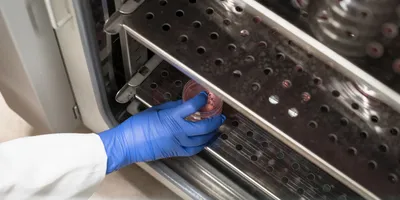There is increasing need for top-quality used and refurbished equipment, particularly for start-up labs and labs transitioning to new markets and applications. At the same time, there are sources of used or surplus equipment from pharma, biotech, and academic labs that shift operations and look to capture a return on investment.
For those looking to sell equipment they no longer need, understanding the key factors in marketing your lab’s equipment will help lead to a successful sale and return on investment.
Qualifying the equipment source
From the buyer’s perspective, shopping for pre-owned or surplus equipment can be a challenge. Difficulties can arise in determining whether a seller is reputable and whether the item is of sufficient quality and value. Sellers can ease these difficulties for buyers by being transparent and responsive to questions or requests for more information.
“Having purchased used equipment myself as part of a start-up lab, I learned what I liked and sought out when shopping for equipment,” explains Justin Andrews, chief strategy officer at REUZEit, an asset management company focused on pre-owned and surplus equipment. REUZEit partners with pharma companies, biotech companies, and others interested in selling assets and recapturing capitol.
“Early on in this industry, we found a lack of transparency. There was a stigma behind used equipment and whether people could trust to buy,” states Ryan Andrews, chief innovation officer at REUZEit. “We set out to make a platform to make assets visible for our users, so they can get better insights into the equipment, quality, pictures, details, specifications—to peel away the used equipment stigma.”
Identifying the value proposition
What defines value? For a buyer looking for used microscopes for educational purposes, this may look much different than an academic lab searching for lightly used or surplus HPLC instruments. In the former case, images and accurate information regarding model numbers and product specifications may suffice. For the latter, detailed service records regarding prior use, reconditioning, and testing may be desired, or even required. Sellers should consider what information they would deem important if purchasing the same piece of equipment, and have these details available up front.
Lab Management Certificate
The Lab Management certificate is more than training—it’s a professional advantage.
Gain critical skills and IACET-approved CEUs that make a measurable difference.
Supporting the sale
From a buyer’s perspective, features such as warranties, service programs, training and installation, and financing options can provide peace of mind that the seller is well-positioned to back up the products and correct unforeseeable issues, should they arise. Testimonials from previous buyers, an informative website, and other resources can help as well.
A seller should find every avenue to correct any issues and offer support after the sale. Having a refund policy in place, providing a guarantee if applicable, and even sending a follow-up note to check on satisfaction of the sale are a few examples of practices that can go a long way toward building the seller’s reputation and earning repeat business.
When looking to sell pre-owned lab equipment, the use of transparency, quality control measures, and comprehensive support are key to a successful marketing approach.











